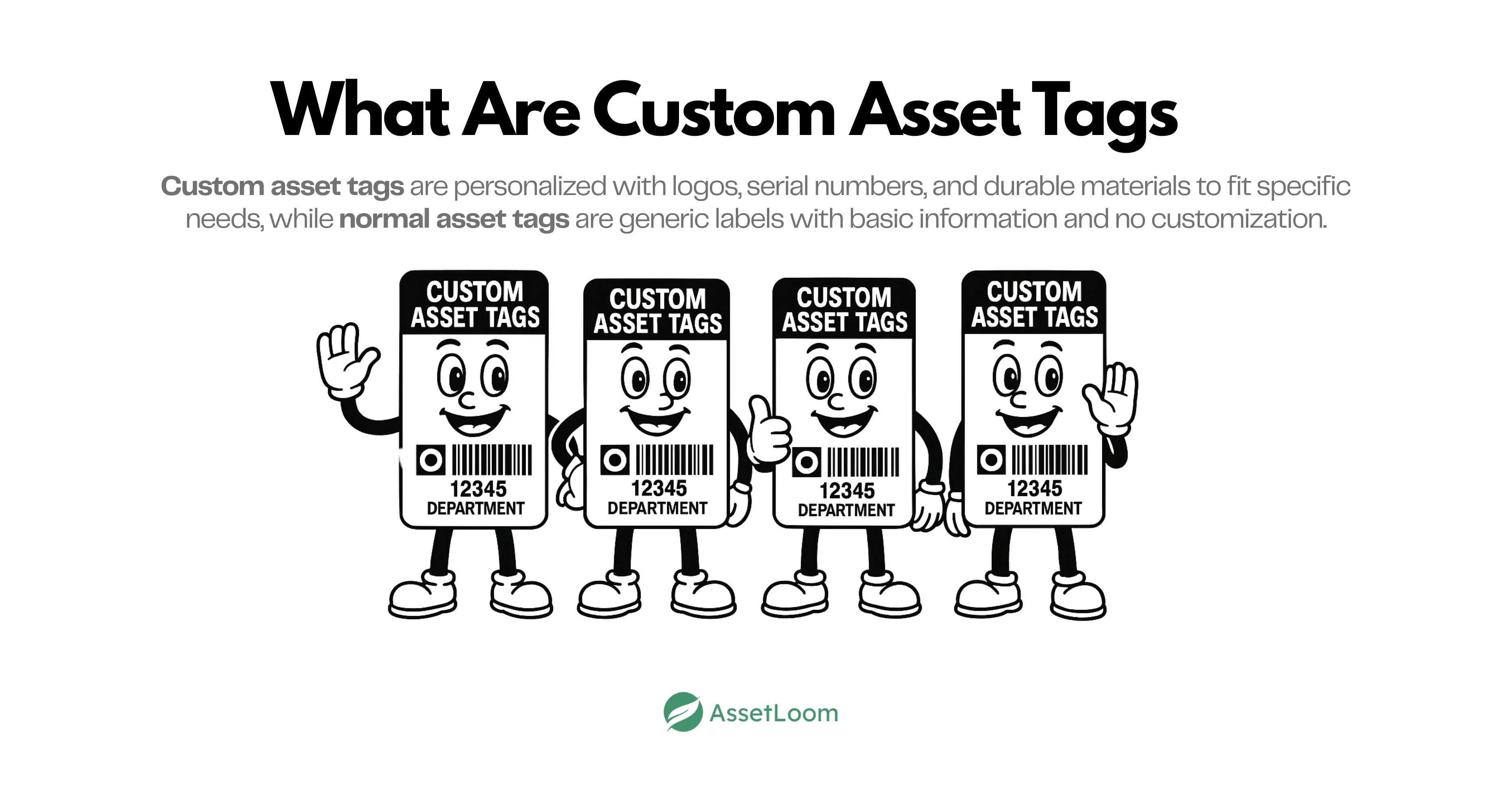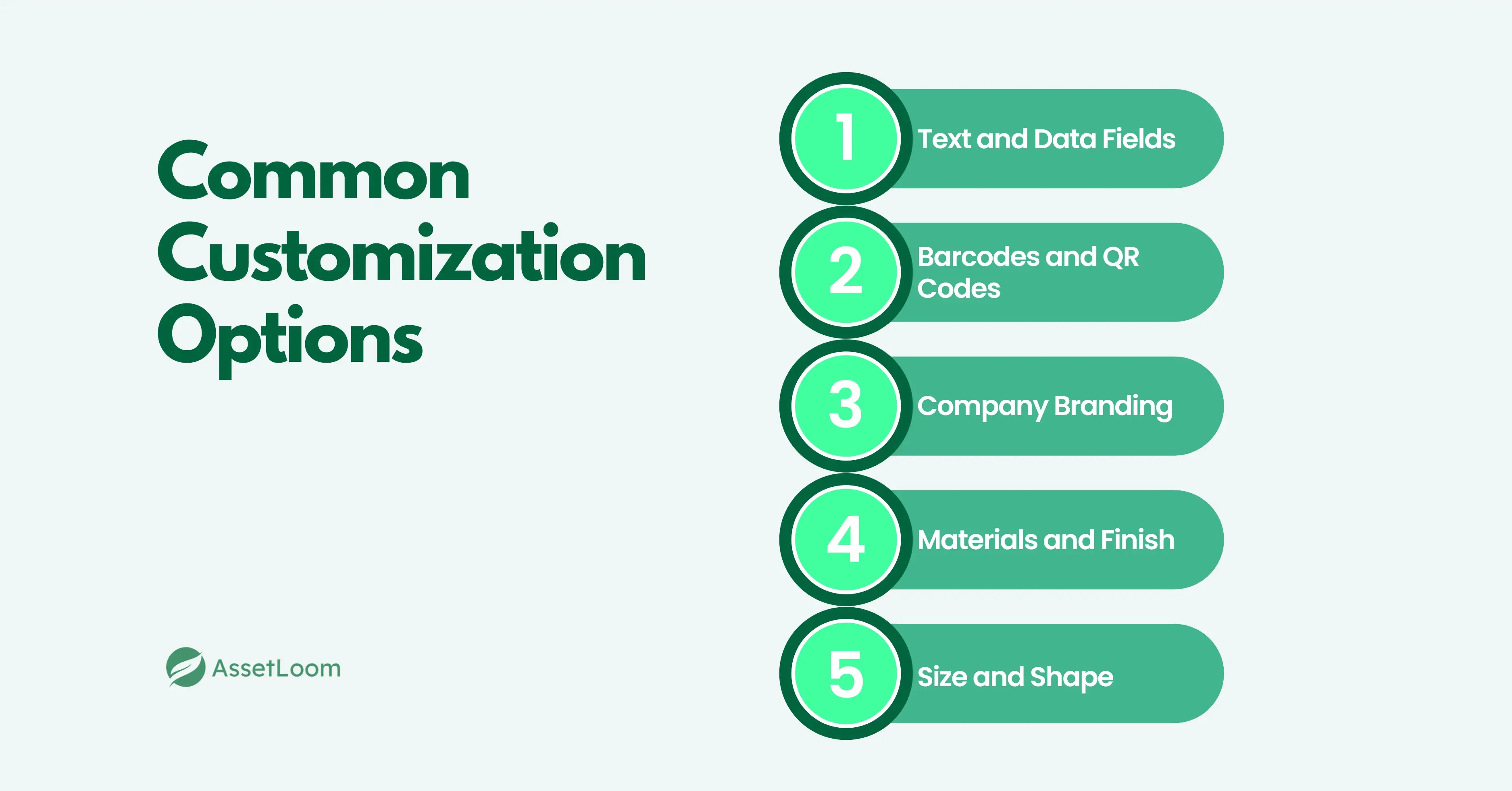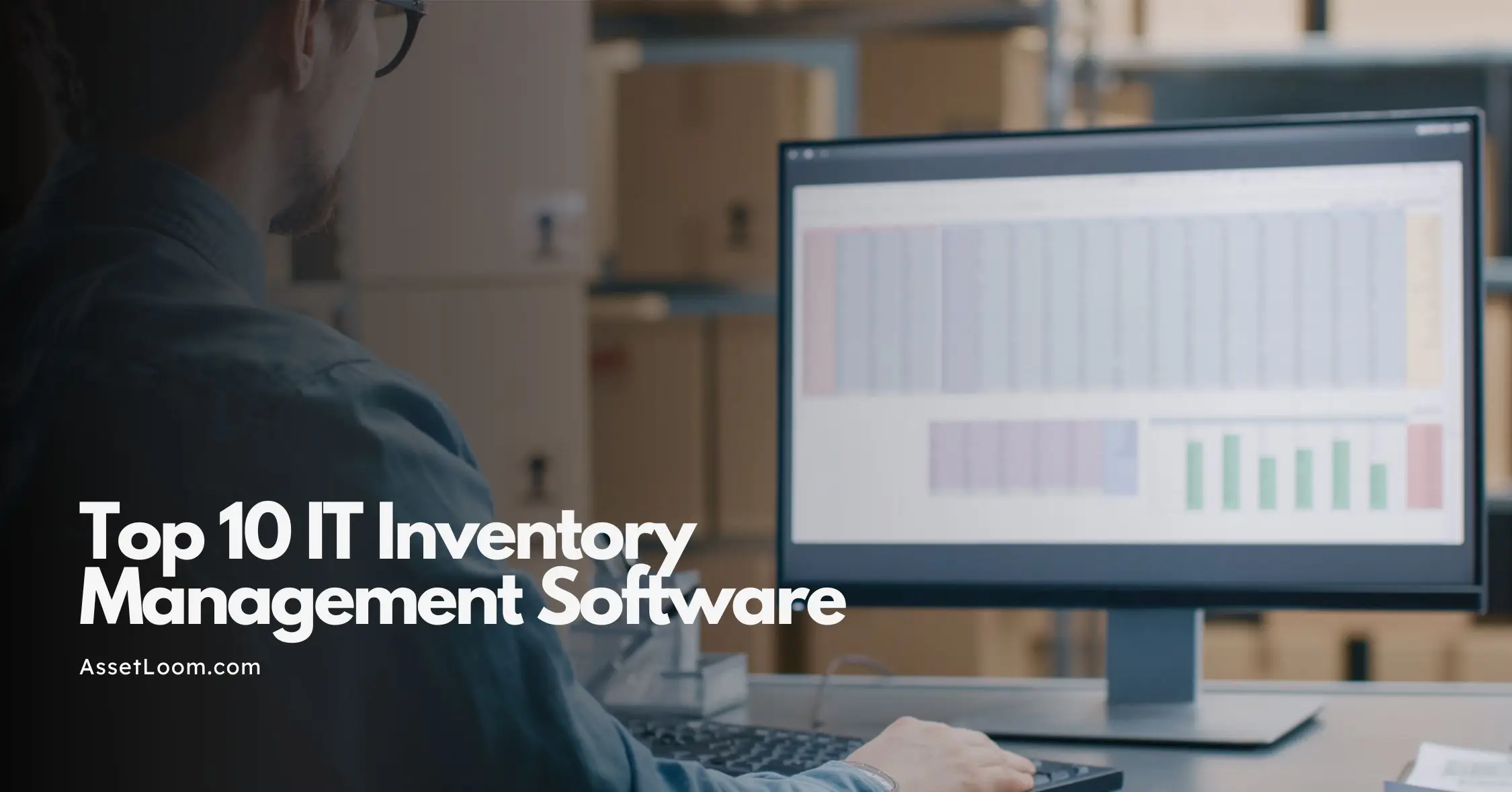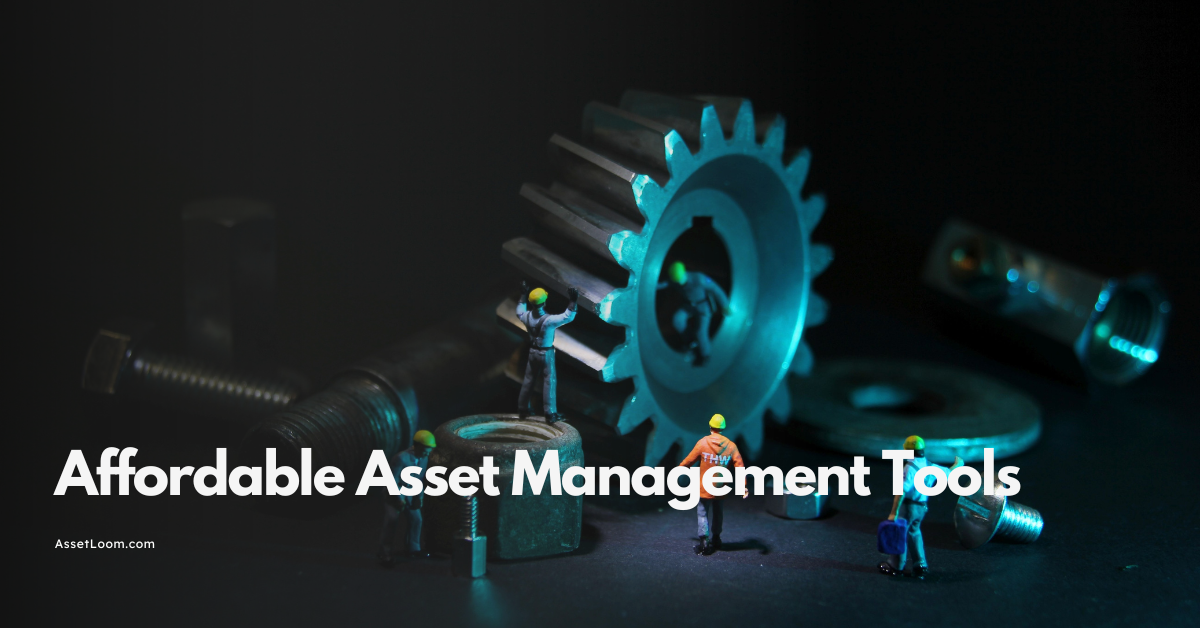Custom Asset Tags: A Simple Solution to Prevent Asset Loss
Custom asset tags help organizations identify, track, and protect their equipment through personalized labels designed for durability, visibility, and accurate inventory control.
Assets go missing more often than most teams realize. A laptop gets reassigned and no one updates the records. A barcode fades on an older piece of equipment. A tool gets left behind on a job site. Over time, small losses like these can lead to big costs and confusion.
Many teams start with simple methods like spreadsheets or shared documents. These work for a while, but as equipment moves across locations or departments, it becomes harder to keep track of everything.
Custom asset tags make this easier. These are labels designed to match your equipment and your process. You can include the asset ID, department name, barcode, or anything else that helps identify and manage the item clearly.
What Are Custom Asset Tags?

Custom asset tags are labels made to help identify and track physical equipment. Unlike standard stickers, these are designed with specific details your organization needs like your company logo, barcode, asset number, or department name. They’re often made from durable materials, so they stay readable over time.
When paired with IT asset tracking software, these tags become part of a larger system that helps teams manage assets more accurately and efficiently.
Here’s what makes them useful:
- Identification: Each tag gives an asset a clear, unique identity. This helps teams know what it is, who it belongs to, and where it’s supposed to be.
- Inventory Tracking: Tags make it easier to track where assets are, whether they’re in storage, in use, or out for repair.
- Customization: You can choose what goes on the tag: company branding, serial numbers, barcodes, or anything else that fits your process. You can also select materials that work for your environment, whether that’s an office, warehouse, or outdoor site.
Custom asset tags differ from normal asset tags in that they are tailored to an organization’s specific needs, often featuring company logos, unique serial numbers, barcodes, and durable materials designed for particular environments. Normal asset tags, on the other hand, are generic labels with standard information and lack customization or branding, making custom tags more effective for precise tracking, identification, and asset management.
Why Custom Asset Tags Are Used
Custom asset tags play a critical role in how organizations manage their equipment. They help with visibility, control, and accountability across departments, locations, and teams. Here's a closer look at their practical uses:
1. Asset Tracking
Definition: Custom asset tags assign a unique identity to each item, making it easier to monitor its location, status, and movement over time.
Example: An IT team tags every laptop with a barcode that links to the company’s asset management system. When an employee checks out a laptop, the barcode is scanned, and the system updates the user and location. This helps reduce the chance of assets going unaccounted for when teams grow or devices are reassigned.
2. Inventory Control
Definition: With asset tags in place, organizations can run quicker inventory checks, spot duplicates or missing items, and keep their records accurate.
Example: In a school, tablets and projectors are tagged with QR codes. During a semester-end audit, staff use a mobile scanner to quickly verify each item and flag anything missing. This reduces the need for manual logging and helps identify underused or misplaced devices.
3. Maintenance and Repair Tracking
Definition: Tags can carry or link to data like serial numbers, warranty info, or maintenance history, making it easier to track service schedules and past repairs.
Example: A hospital tags all portable medical devices with custom labels that include equipment numbers. When a machine breaks down, the maintenance team scans the tag to pull up its service record. They can see past issues, who repaired it, and when the next check is due.
4. Theft Deterrence
Definition: Custom asset tags make ownership clear. Tamper-evident or permanent labels can discourage theft and support recovery if an item goes missing.
Example: A construction company uses metal tags with its company name and phone number etched in. The tags are hard to remove and impossible to alter. If a tool is stolen and recovered by authorities, it’s easier to prove ownership and return the asset.
The Problem of Asset Loss
Asset loss happens more often than many teams expect. Items get moved, borrowed, or reassigned without proper tracking. Over time, this leads to confusion about where assets are, who’s using them, or whether they’re even still in service. When visibility breaks down, it becomes harder to manage equipment across departments or locations.
This lack of visibility also affects maintenance, budgeting, and compliance. Assets may miss scheduled servicing, remain in use past their useful life, or disappear from records entirely. In regulated industries, missing items can raise red flags during audits and increase the risk of penalties. For finance and operations teams, this adds pressure to track down gaps and correct reports after the fact.
The cost of lost assets isn’t limited to replacements. It slows down workflows, wastes staff time, and leads to duplicate purchases. It also reduces trust in the asset records teams rely on to plan and operate efficiently. While it may start with one or two items, unmanaged loss can grow quickly if there’s no system in place to control it.
How to Track a Lost Laptop: A Guide for IT Asset ManagersCommon Customization Options
Custom asset tags can be tailored in many ways to fit different environments, teams, and tracking needs. The goal is to make each tag useful, durable, and easy to scan or read.

Text and Data Fields
One of the key ways to customize asset tags is by selecting the specific information that appears on each label. This data helps teams quickly identify and manage assets without needing to look up additional details.
Common text and data fields include:
- Asset ID or Serial Number: A unique code or number assigned to each asset, making it easy to track and differentiate items.
- Department or Location: Identifying which team or area owns or uses the asset helps avoid confusion when equipment moves between departments or offices.
- Contact Information: Including a phone number or email address allows anyone who finds the asset to report it or ask questions.
- Purchase or Warranty Dates: Showing when the asset was bought or when its warranty expires can help with budgeting and maintenance planning.
- Usage Instructions or Safety Notes: For specialized equipment, tags can include brief guidelines or warnings relevant to safe handling or operation.
Selecting the right mix of data fields ensures that each asset tag provides useful information at a glance. It also supports smoother audits, maintenance, and tracking, saving time for everyone involved.
Barcodes and QR Codes
Adding barcodes or QR codes to custom asset tags helps automate and speed up asset tracking. These codes store information that can be scanned quickly with a barcode reader or smartphone, linking directly to digital records about the asset.
Barcodes are a series of vertical lines representing numbers or characters. They work well in environments where handheld scanners are common, such as warehouses or IT departments. Scanning a barcode instantly pulls up the asset’s details, like its ID, location, or maintenance history.
QR codes can hold more data than barcodes and can be scanned easily using smartphones. When scanned, they often direct users to a web page or database with full asset information. This makes QR codes useful for teams that want quick, mobile access to detailed records without specialized scanning equipment.
Including these codes on your custom asset tags reduces errors from manual data entry and makes regular audits or check-outs faster and more accurate.
Company Branding
Including your company’s branding on asset tags helps clearly show ownership and adds a professional touch. Custom tags can feature your logo, brand colors, or a specific design style that matches your organization’s identity.
Branding on asset tags makes it easier to recognize company property, which can discourage theft or misuse. It also helps when assets are shared between teams or taken offsite, as anyone who sees the tag knows exactly where it belongs.
Beyond security, branded tags reinforce your organization’s image and attention to detail. For companies working with clients or partners, well-designed asset tags contribute to a consistent, polished appearance.
Materials and Finish
Choosing the right material and finish for custom asset tags is important to make sure they last and stay readable in their specific environment. Different settings require different tag types to withstand wear and tear.
- Metal or Aluminum Tags: These are durable and ideal for outdoor or industrial use where tags may face rough handling, exposure to weather, or chemicals. Metal tags resist fading and damage better than paper or plastic.
- Polyester or Vinyl Tags: Commonly used for office equipment, these materials offer good durability with some flexibility. They resist scratches, moisture, and general wear in everyday indoor environments.
- Tamper-Evident Tags: These tags are designed to show clear signs if someone tries to remove or alter them. They’re often used for high-value or sensitive assets where security is critical.
- Heat- or Chemical-Resistant Finishes: For lab or manufacturing settings where tags might be exposed to heat, solvents, or chemicals, special finishes ensure the information stays intact and readable over time.
Picking the right combination of material and finish helps your asset tags stay effective throughout the lifecycle of your equipment.
Size and Shape
Custom asset tags come in various sizes and shapes to fit different types of equipment and surfaces. Choosing the right size and shape makes sure the tag fits securely and the information is easy to read or scan.
- Small Tags: Ideal for compact devices like laptops, tablets, or handheld tools where space is limited. These tags keep identification clear without taking up too much room.
- Large Tags: Useful for bigger equipment or machinery that may need more detailed information on the tag, such as maintenance instructions or multiple data fields.
- Different Shapes: Tags can be rectangular, square, circular, or even custom-shaped to match your branding or fit awkward spaces. Rounded corners and flexible materials can also reduce wear and peeling over time.
Matching the tag’s size and shape to the asset’s surface ensures the tag stays in place and serves its tracking purpose effectively.
When Should You Use Custom Asset Tags?
Custom asset tags are useful whenever you need clear identification and tracking of physical items. They work well for businesses of all sizes and across many industries. Here are some common situations when custom tags make sense:
- Tracking Valuable or Portable Assets: When equipment is frequently moved, loaned out, or shared among teams, tags help keep tabs on where each item is and who is responsible for it.
- Managing Large Inventories: If your organization has many similar assets, custom tags make audits and inventory checks faster and more accurate.
- Meeting Compliance Requirements: For regulated industries, custom tags provide a clear, permanent way to document and track assets for audits or safety inspections.
- Preventing Theft or Loss: Tags with company branding and unique IDs discourage unauthorized use or theft by clearly marking ownership.
- Simplifying Maintenance and Repairs: When tags include maintenance data or link to digital records, they help ensure timely servicing and reduce downtime.
In short, whenever you want better control, visibility, and accountability for your assets, custom asset tags are a practical and cost-effective solution.
Conclusion
Custom asset tags offer a simple but powerful way to improve how organizations manage their physical assets. They help reduce loss, speed up inventory checks, and support maintenance efforts. By tailoring tags to your specific needs, you create a reliable system that keeps assets visible and accountable.
Using custom asset tags helps save time, cut unnecessary costs, and reduce the frustration that comes with missing or misplaced equipment. For any team looking to take control of their assets, custom tags are an effective and practical step forward.

Related Blogs
Subscribe for Expert Tips and Updates
Receive the latest news from AssetLoom, right in your inbox.


